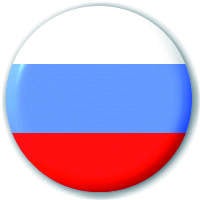
The gross written premium of the Russian life insurance market is forecast to more than triple from RUB 108.6bn in 2014 to RUB 327.4bn in 2019, – despite challenges such as Western sanctions -says a Timetric report.
Life Insurance in Russia, Key Trends and Opportunities to 2019, which is available at Timetric’s Insurance Intelligence Center (IIC), explains that economic and trade sanctions imposed on Russia over the Crimean annexation have crippled the struggling Russian economy and shaken investor confidence.
The sanctions restrict all financial transactions with Russia, which has put foreign insurers and investors in a fix.
Along with all other major industries, the IIC report notes that growth in the banking and insurance sectors also recorded a negative trend in 2013-2014. Financing restrictions, frozen assets, restrictions on access to capital markets and goods and services curtailed economic growth, which has degraded investor confidence, resulting in a lot of foreign companies to end business in Russia.
For example, the Russian Trading System (RTS) index dropped 45% in 2014; the worst downfall of any major equity index.
High inflation
High inflation has also been a major economic challenge. Russia recorded inflation of 11.4% in December 2014, while the Russian currency fell to 46.7 per US dollar in November 2014, the worst in 11 years.
Speaking to Life Insurance International, Victor Nikolskiy, associate director of financial institutions ratings at Standard and Poor’s in Moscow, highlights the link between rising interest rates and the Russian life market.
Nikolskiy says: “If we look a couple of years back, the life sector was growing very rapidly.
“However, the explanation for this is that it started from a very low base. For example if we look at the percentage of GDP, the market would be less than 0.2% GDP, while for the non-life sector that would be significantly higher at 1.2% to 1.3% of GDP.
Nikolskiy adds: “In the first half of 2015 we saw very high interest rates on the market, driven by the Central Bank key rate, which was very high at the end of last year.”
“Here in Russia about 50% of the market is connected to growth in the lending sector. What we are seeing is that loan portfolios are not growing and, at best it will stagnate.”
From a macro-economic perspective, the IIC report says Russia’s economy is expected to decline by -2.7% in 2015. However, stabilizing international oil prices are expected to enable the country’s economy to register a growth rate of 0.7% in 2016.
Growth drivers
In spite of these challenges, there are several reasons to be positive about the outlook for the Russian life market. According to the IIC report, these include:
- An increase in the FDI cap
- Low penetration
- Introduction of electronic insurance contracts
Increase in FDI cap: The new FDI regulations applicable from 1 January 2014 increased the FDI cap in insurance from 25% to 49% without any restriction in operations. In a situation where the market is devoid of capital inflow, this is expected to be a respite, as more foreign investors would like to invest.
Moreover, Russia?s entry into the World Trade Organisation is also expected to attract investment as investors will be able to bypass local licensing process.
Low penetration: Russian life insurance penetration stood at 0.2% in 2014, which was much lower than other countries in the BRIC region such as Brazil at 0.6%, and India at 2.7%. A low penetration rate indicates an opportunity for growth, as it reflects a potentially untapped market.
Introduction of electronic insurance contracts: Effective from 6 April 2014, insurance contracts can be performed between the insured and the insurer in electronic form. The official website of the insurer can be used for the transfer of information between the insured and the insurer.
In the case of voluntary insurance, the insured must perform an electronic signature on the insurance contract in accordance with the Federal Law of April 6, 2011 N 63-FZ on electronic signatures. This signifies that the insured has understood the terms and conditions of the contract.
The law is expected to boost the e-commerce channel and instil confidence in consumers over the online purchase of insurance policies. In light of this, companies are expected to launch more online products between 2014 and 2019.
During the review period, internet penetration in Russia grew from 43% in 2010 to 59.3% in 2014. As a result, insurers have started to rely heavily on e-commerce, including mobile apps, to promote, sell products and provide quick customer support services.
Many companies developed mobile applications to increase their reach and provide better services, such as Rosgosstrakh-Life which released “Client’s Cabinet”.
Regulation update
Another positive for the Russian life insurance market is that in September 2013, the Central Bank of the Russian Federation became the entire country’s financial market regulator. This was through transferring a range of functions previously performed by the Federal Financial Markets Service.
As well as supervision of commercial banks, the function of the new single regulator includes the regulation and monitoring of Russia’s non-bank financial institutions, including asset management companies, pension funds, brokers and intermediaries, and insurers.
Nikolskiy comments: “The regulator has become much more focused on insurance.
“We have only recently moved to the Central Bank becoming the regulator of the whole financial sector, including insurance. The number of initiatives the central bank is moving forward is really significant compared to the number a few years ago.
“The regulator is starting to clean the market of small companies which were not particularly solvent. It has started to bring in initiatives in terms of obligatory lines, increasing tariffs and changing limits. It has begun doing things in the markets that have been long awaited and that have not been done for ten years.”
Valeria Ermakova, a financial analyst at A.M. Best is also positive on the regulatory moves, noting that any legislative initiatives that would affect the life segment will be more timely, as the Central Bank has more power over the financial markets.
However, she adds: “The legislative framework will have to be strengthened substantially in order to promote life products, particularly unit-linked offerings, and to protect the interests of policyholders.
Consumers’ perception of life insurance
In terms of consumers’ perception of insurance, Nikolskiy comments: “In terms of Russian citizens, I would say that a lot of them are still treating insurance as a kind of tax. “If we see that disposable income is dropping and that insurance expenses are kind of on top of the spending pyramid, this basically means people are trying to save on insurance.
“We can already see this. It interesting that some products with a deductible have become very popular on Russian markets, when these products were not very popular before.”
Whatever the opinion to insurance in general, Ermakova remains positive: “The popularity of life products with private individuals is also expected to increase.”
Ermakova says: “With the current interest rates in place (around 11.5%), most people consider bank deposits as a more attractive way of investing their funds. In this respect, the market welcomed recent changes to the legislation which meant that from January 2015, individuals purchasing life policies for a period of five years and more will be able to claim tax deductions within a specified limit.”







